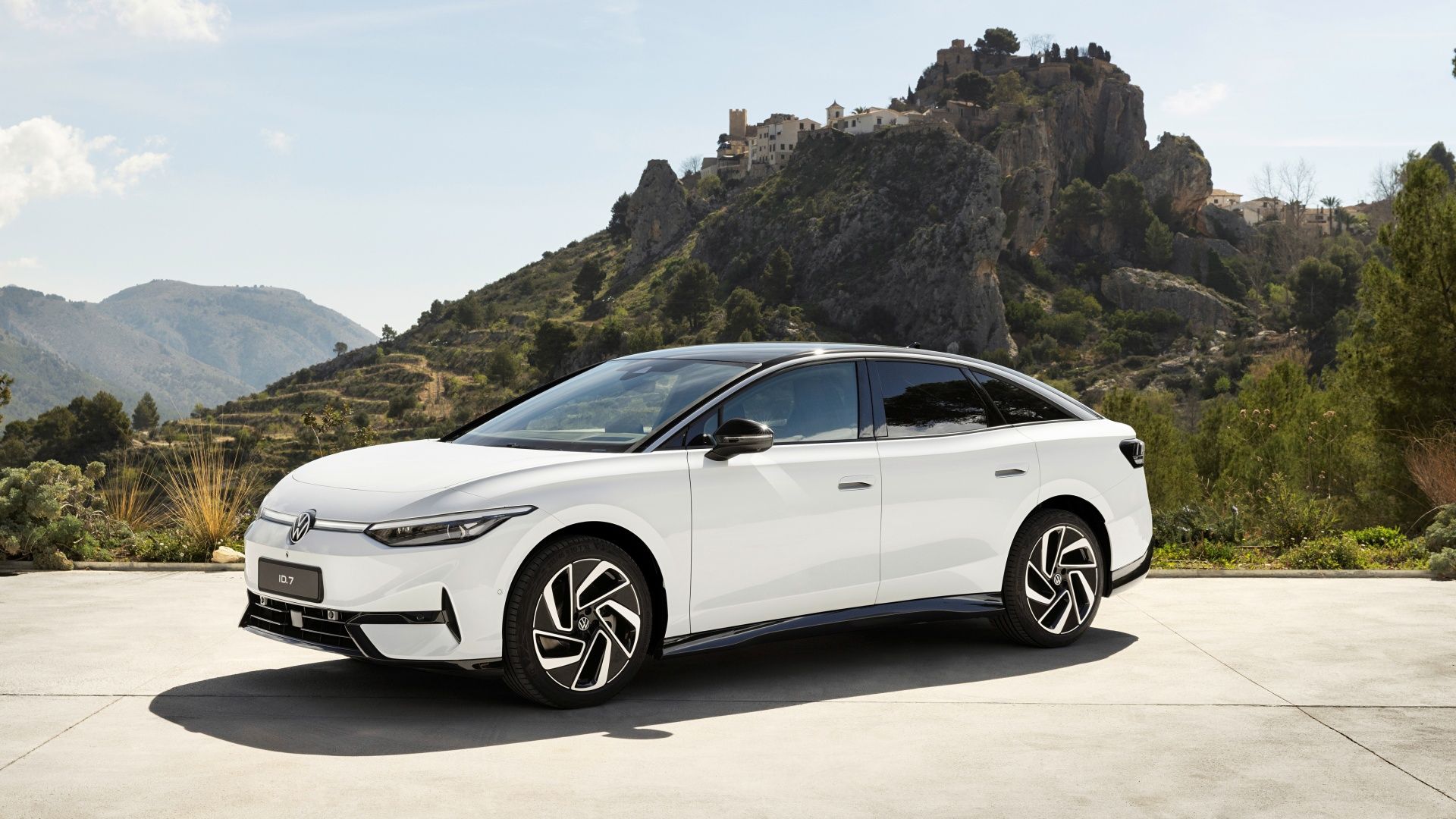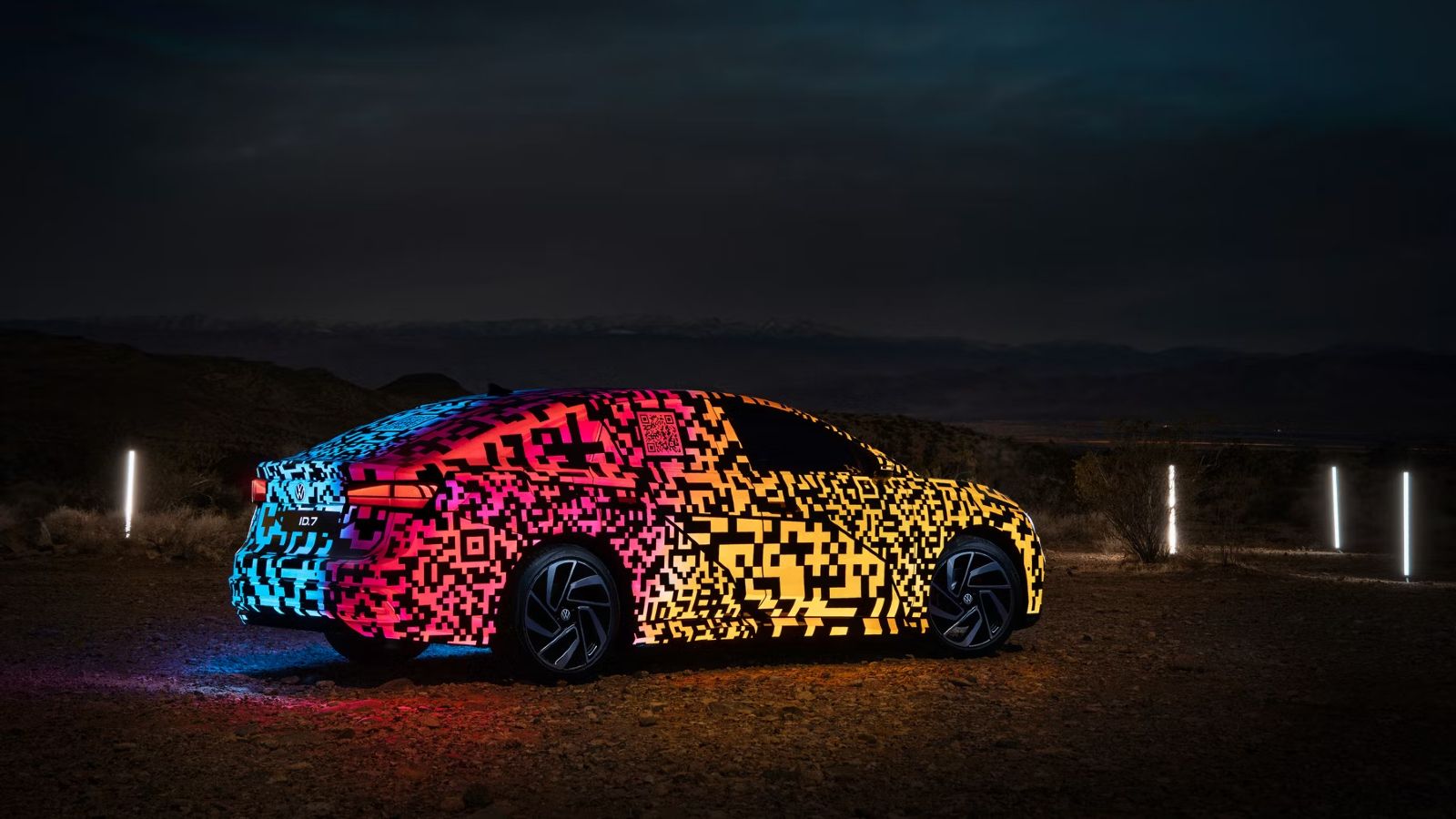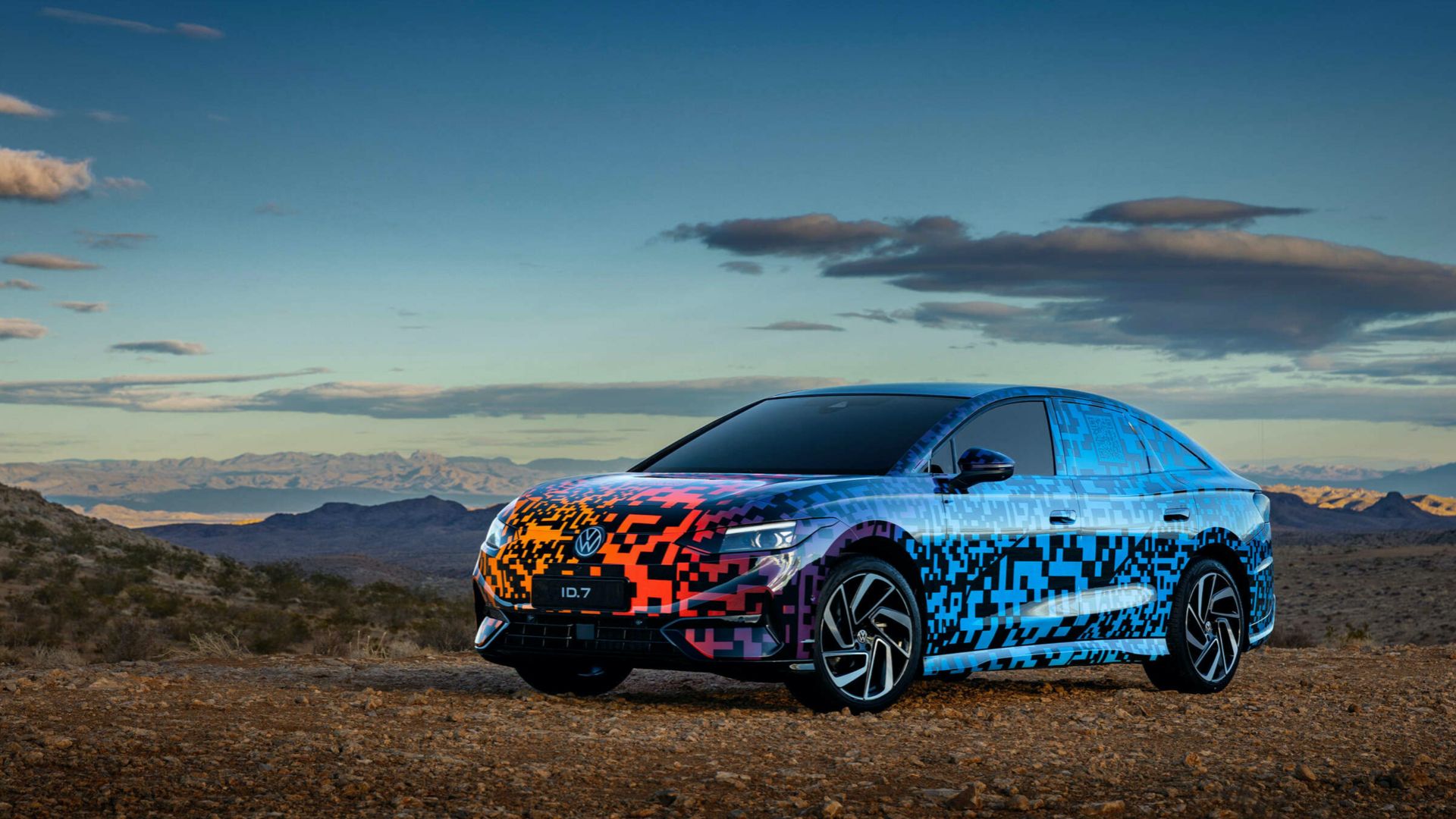Volkswagen is all-in with major manufacturers in the realm of electrifying transport. Beginning with its ID.4 SUV, and ID.Buzz Minivan, it has developed the new ID.7 sedan. This particular model is based on the ID.Aero concept, and is a mid-size four-door car resembling in size and replacing the Passat. Volkswagen is "positive that EVs will drive the future." Thus, it has developed these vehicles and shifted production to EVs in general. The company claims that times are changing and that it is changing with these times. However, it's notable that VW has put all its energy into EVs while leaving the investments into hydrogen technology advancements to others, for now at least. On one side of the spectrum, this means we should get a lot from VW in terms of EV production, and in that sense, the possibilities are very interesting. Passionate enough about EVs, Volkswagen looks to soothe concerns and create a better understanding of the tech for prospective buyers.
The ID.7 Builds Off The ID.4
The ID.7 will go on sale in 2024, most likely as a 2025 model. Still, using the ID.4 as a baseline, we can expect the ID.7 to build off that. First off, it should have rear- and all-wheel-drive electric powertrain options, with a range of around 300 miles. This is slightly longer than the ID.4. All models will have a 15-inch infotainment touchscreen, with even a Heads-Up Display (HUD). The HUD will project navigation instructions as well as key information such as speed, onto the vehicle's windshield for the driver to see. Estimated pricing and trim levels are expected to be on par with those of the ID.4. In that case, we'd have a Base, Pro, Pro S, and Pro S Plus, with price ranges from $55,000-63,000. Initially, it would RWD with a single motor, with later availability of a dual-motor AWD version set-up. The former option would have 282 horsepower, compared to the 201 horsepower motor of the ID.4, with a 0-60 time of five seconds. Therefore, an AWD dual-motor set-up would provide quite the punch off the line for a four-door sedan. Using the ID.4's 77-kWh battery pack, it will provide 300 miles of range, greater than the ID.7 due to its more aerodynamic design. Expect the AWD version to have an optional 86-kWh battery, where the range could be over 350 miles. With the ID.4's 107 MPGe city rating, expect the ID.7 to surpass that. Expect the ID.7's electrical components to be covered for eight years or 100,000 miles, just like the ID.4s.
Expect A Nice Interior Design
We've already mentioned the HUD and 15-inch infotainment touchscreen, which are both very nice features. HUDs are more common now, but used to be relegated to more performance-orientated vehicles upon inception. Likewise, any screen with dimensions over a foot is quite impressive, considering initial screens were half that size at most when the tech was first being installed in cars. Along those lines, the ID.7 has nicely bolstered, comfortable-looking front bucket seats. Replacing the Passat, the ID.7's interior is spacious, and cargo space is also generous. Rather than a traditional trunk, the vehicle features a liftback design, like that of the gas Arteon sedan. VW engineered an air vent design that uses electric motors to better control the climate in the cabin. Perhaps the coolest feature of all, is that a large glass roof is available, that can switch from transparent to opaque depending on preference!
The ID.7 Will Be A Big Threat To The Tesla Model 3
Another estimated price for the ID.7 is a base cost of $38,000. The 282 horsepower motor produces 402 pound-feet of torque. The range is up from the ID.4's 275 miles, to an estimated 300 miles. The ID.7 does share the same VW platform as the ID.4 and ID.Buzz, with a 400-volt architecture. The prototype vehicle tested here, puts the power to the ground easily, and acceleration is very good. This makes sense given the generous amount of instantaneous torque the motor produces. There are four different driving modes: Comfort, Sport, Eco, and Individual.
The vehicle will have simulated audio, noises that can't be turned off, but may be configured in Individual driving mode. Designers and engineers have looked to deliver that "biz class vibe," and correct things before carryover from the ID.4. There's a tiny info display where traditional gauge clusters would be, while the HUD is large, bright, and multicolored. In addition to speed and navigation, the HUD will also show battery state information and media cues. There's an all-new voice command system to encourage drivers to keep their hands on the wheel, by controlling: drive modes, nav, climate, media, etc.
With an extensive list of commands and capabilities, the system is not an AI-learning one, needing over-the-air updates. Sliders to control volume and temperature are backlit, and controls for the climate-controlled seats and steering wheel are fixed. These are other improvements from the ID.4. The ID.7 is 195.3 inches long, with a 116.8-inch wheelbase, and is 73.3 inches wide. It offers 18.7 cubic-feet of cargo space, with rear seats that fold nearly flat. As Americans, we love our space, and it seems this vehicle could win over the SUV-crazed public.



